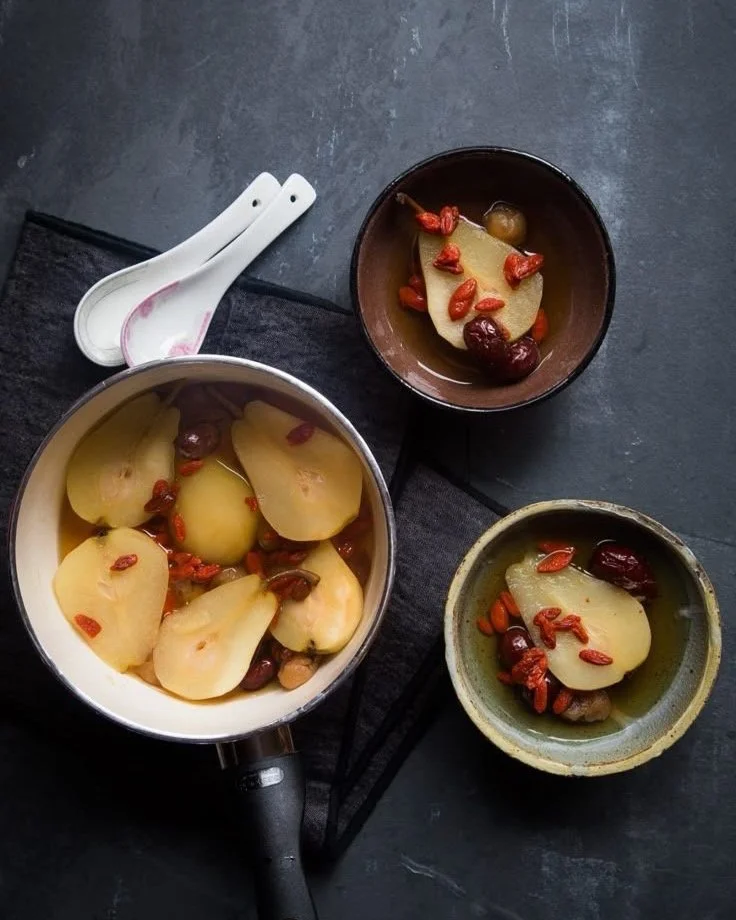Autumn: The Season of Integration
In Traditional Chinese Medicine (TCM), autumn belongs to the Metal element, which governs the lungs and large intestine. This season is about refinement, distilling what is essential, and releasing what is no longer needed. The Metal element is associated with grief, a natural emotion that arises when we let go, making space for something new. On the other hand, this emotion is also tied to discernment and how we embrace long-term connections in our lives.
The lungs, the organ of inspiration and expiration, remind us to take in what nourishes us and exhale what does not serve us. The spirit of the lungs is the Po, our corporeal soul, which enters us with our first breath and leaves with our last. It connects us to our physical existence and our ability to be present in the here and now. The large intestine, responsible for elimination, mirrors this process, ensuring that we clear stagnation and make way for fresh vitality. When we align with the rhythm of autumn, we honour the cycles of integration, reflection, and release.
Autumn and the Luteal Phase
In the menstrual cycle, the late luteal phase mirrors autumn’s energy. After ovulation, the body prepares for either implantation or menstruation. This phase is a time of integration, processing all that has come before and determining what needs to be released. Just as autumn calls for introspection and discernment, the luteal phase asks us to slow down and listen to what our bodies and emotions are communicating. There is often a deep truth within this time.
So often, this voice goes unheard. We are told we are "too much," "too emotional," or "over the top" when, in reality, this phase and all that arises here come from a deep sense of truth. What lies beneath these thoughts? What is the root of what is bothering you? During other phases of the cycle, it may be easier to ignore these things, but here, they demand to be acknowledged. We must learn to integrate these messages, to listen to them. Once they are understood, we can let them go, allowing them to transform into something new.
If conception does not occur, progesterone levels drop, and the uterus prepares to shed its lining. This release is both physical and emotional, making it a potent time for reflection and letting go of what is no longer aligned. The luteal phase, like autumn, can stir up feelings of grief, frustration, or even a longing for something we cannot quite name. Honouring these emotions rather than suppressing them allows us to move through this phase with greater ease and clarity.
The Pungent Flavour and Its Role in Autumn
In TCM, each season is associated with a particular flavor that supports the corresponding organ system. Autumn is linked to the pungent flavor, which has an opening and dispersing effect. Pungent foods help to stimulate the lungs, clear excess mucus, and promote circulation of Qi throughout the body.
Examples of pungent foods include ginger, garlic, onions, radishes, mustard greens, horseradish, and white pepper. These foods help to warm the body, support digestion, and enhance immunity—crucial as the weather cools and we become more susceptible to colds and respiratory illnesses. Including these foods in your diet can help maintain balance, support lung function, and encourage the natural process of release.
Common Imbalances in Autumn
When we resist the natural energy of release, we may experience imbalances that manifest in both our bodies and emotions.
Lung Imbalances: Respiratory issues, dry skin, shallow breathing, and lingering feelings of sadness or grief.
Large Intestine Imbalances: Constipation, bloating, or an inability to let go emotionally or mentally.
These imbalances arise when the Metal element is either deficient or excessive. If we hold on too tightly, whether to emotions, habits, or expectations, we may feel stuck, irritable, or overwhelmed. If we are too scattered or ungrounded, we may struggle with lethargy, disconnection, or an inability to fully process our experiences.
Practices to Find Balance in Autumn
Honouring the energy of this season requires a conscious effort to slow down, reflect, and embrace the process of release. Here are some simple ways to support yourself:
Breathwork for the Lungs: Deep, intentional breathing nourishes the lungs and helps clear stagnant emotions. Try alternate nostril breathing or slow diaphragmatic breathing to support lung health and emotional clarity.
Warm, Moistening Foods: As the air becomes drier, we need to hydrate and nourish our bodies. Cooked pears, soups, bone broth, and roasted root vegetables support digestion and provide warmth. Avoid excessively dry or raw foods that can further deplete the body.
Acupressure for Release: Stimulate Lung 7 (Lie Que) to support grief processing and immunity, and Large Intestine 4 (He Gu) to help with letting go and easing tension.
Journaling and Reflection: Use this time to write down what you need to release—old habits, relationships, expectations, or emotions. Allow yourself to grieve what is passing and welcome what is coming.
Movement that Encourages Flow: Gentle yoga, stretching, or qigong can help move stagnant energy in the body and support a smoother menstrual transition.
Embracing Rituals of Release: Engage in symbolic acts of letting go, such as burning a written intention, taking a cleansing bath, or spending time in nature witnessing the seasonal transition.
The Gift of Autumn’s Wisdom
Autumn teaches us that release is not loss, but transformation. By allowing ourselves to let go, whether through the breath, the bowels, or the menstrual cycle, we create space for deeper clarity, inspiration, and renewal.



